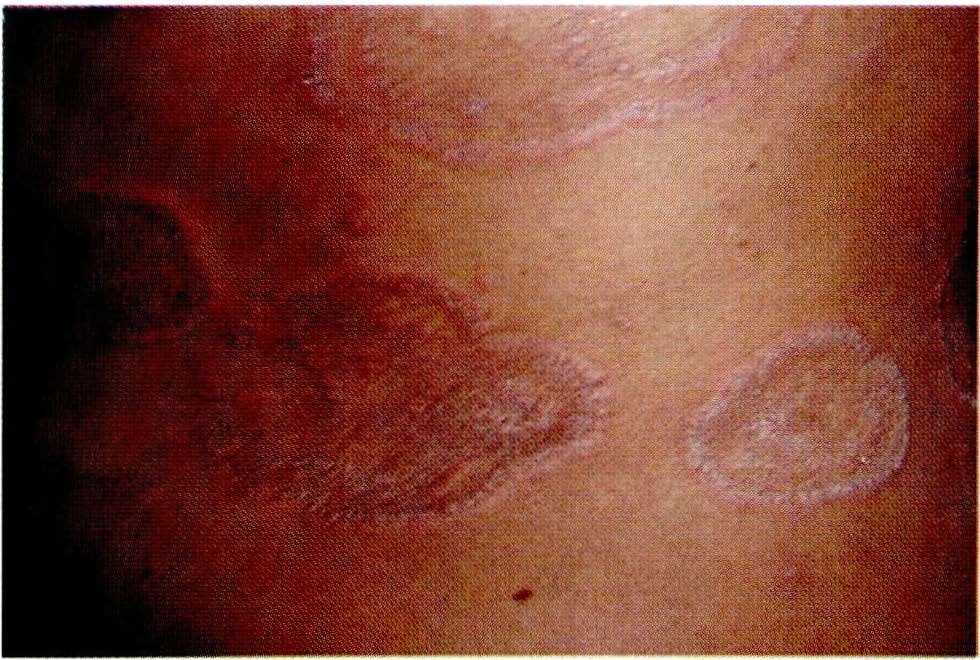Inmunología de las dermatofitosis
Palabras clave:
dermatofitos, dermatofitosis, inmunologíaResumen
Los dermatofitos son hongos que pertenecen taxonómicamente al subfilum Ascomycetosy al género Arthroderma, teniendo, a su vez, tres géneros:
Microsporum, Trichophytum y Epidermophytum, con aproximadamente 40 especies identificadas. La enfermedad que producen los dermatofitos se conoce como dermatofitosis, dermatofitomicosis, tinea o tiña. Las dermatofitosis hacen parte del grupo de las micosis cutáneas. Las infecciones causadas por estos hongos generan respuestas inmunológicas, siendo la más importante la respuesta de hipersensibilidad retardada o tipo IV. Se hace una revisión de las generalidades de estas micosis, con énfasis en los procesos inmunológicos y la patogénesis que caracteriza a esta enfermedad.
Biografía del autor/a
Miguel Felipe Gaitán Calvo, Universidad Pontificia Bolivariana
Médico Cirujano, Universidad Pontificia Bolivariana, Medellín - Colombia.
María Soledad Aluma Tenorio, Universidad Pontificia Bolivariana
RII Dermatología, Universidad Pontificia Bolivariana, Medellín.
Nora Cardona C., Instituto Colombiano de Medicina Tropical
Docente Programa de Micología, Instituto Colombiano de Medicina Tropical, Medellín, Colombia.
Referencias bibliográficas
2. Melina de Soschin D. eta/. Micosis Superficiales. www. Galderma.com Disponible en: http :/ /www. gal de rma.com. mx/pac/Pac2/d2_p9. htm.
3. Nelson MM, Martín AG, Heffernan MP. Superficial fun-gal infections: Dermatophytosis, Onychomycosis, Tinea Nigra, Piedra. In Fitzpatrick Dermatology in General Me-dicine. 6th Ed, Me Graw Hill, 2003. p 1989 - 2005.
4. The major histocompatibility complex. Abbas AK, Li- chtman AH, Pober JS. Cellular and Molecular lmmu-nology, ed.4; Philadelphia: Sauders; 2000, p 63-78.
5. Antigen processing. Abbas AK, Lichtman AH, Pober JS. Cellular and Molecular lmmunology, ed.4; Philadelphia: Sauders; 2000. p 79-101.
6. Activation of T lymphocyte. Abbas AK, Lichtman AH, Pober JS. Cellular and Molecular lmmunology, ed.4; Philadelphia: Sauders; 2000. p 101-182.
7. Citokines. Abbas AK, Lichtman AH, Pober JS. Cellular and Molecular lmmunology, ed.4, Philadelphia: Sau-ders; 2000. p 235-269.
8. Effector mechanisms of cell - mediated immunity. Ab-bas AK, Lichtman AH, Pober JS. Cellular and Molecu-lar lmmunology, ed.4. Philadelphia: Sauders; 2000. p 291- 308.
9. Duek L, Kaufman G, Ulman Y, Berdicevsky l. The pa-thogenesis of dermathofyte infections in human skin sections. J lnfect. 2004; 48(2): 175-80.
https://doi.org/10.1016/j.jinf.2003.09.008
10. Koga T. Duan H, Urabe K, Furue M. lmmunohistoche- mica! detection of interferon-gamma-producing cells in dermatophytosis. Eur J Dermatol. 2001; 11 (2): 105-107.
11. Koga T. lmmune response in dermatophytosis. Nippon lshinkin Gakkai Zasshi. 2003; 44(4):273-5 (Abstract).
https://doi.org/10.3314/jjmm.44.273
12. Bonifaz A. Tinae imbricata or Tokelau. lnt J Dermatol 2004; 43 (7): 507.
https://doi.org/10.1111/j.1365-4632.2004.02171.x
13. Aenas R. Dermatophytoses in Mexico. Rev lberoam Mico!. 2002; 19(2):63-67.
https://doi.org/10.1023/A:1016202618249
14. Elewski BE, El Charif M, Cooper KD, Ghannoum M, Birnbaum JE.trichophytin. Reactivity to antigen in pa-tients with onychomycosis: Effect of terbinafine. J of Am Acad Dermatol. 2002; 46: 371 - 375.
https://doi.org/10.1067/mjd.2002.119674
15. Muñoz -Pérez MA, Rodriguez-Pichardo A, Camacho F, Rios JJ. Extensive and deep dermatophytosis caused by Trichophyton mentagrophytes var. interdigitalis in an HIV-1 positive patient. J Eur Acad Dermatol Venereol. 2000; 14(1 ):61-3.
https://doi.org/10.1046/j.1468-3083.2000.00015.x
16. Ludwig RJ, Woodfolk JA, Grundmann-Kollmann M, En-zensberger R, Runne U, Platts-Mills TA, Kaufmann R, Zollner TM. Chronic dermatophytosis in !amellar ichth-yosis: relevance of a T-helper 2-type immune respon-se to Trichophyton rubrum. Br J Dermatol. 2001; 145(3):518-21.
https://doi.org/10.1046/j.1365-2133.2001.04390.x
17. Tateishi Y, Sato H, Akiyama M, Abe M, Kobayashi H, Umehara S, Yamaguchi J, Shibaki H, Shimizu H. Se- vere generalized deep dermatophytosis due to Tricho- phyton rubrum (trichophytic gran u loma) in a patient with atopic dermatitis. Arch Dermatol. 200:4; 140 (5):624-625.
https://doi.org/10.1001/archderm.140.5.624
18. Sato N, Tagami H. Severe measles in a young female patient with chronic, generalized Trichophyton rubrum infection showing type 2 helper T cell-dominant immu-nologic reactivity. J Am Acad Dermatol. 2003; 48(5 Suppl):S43-46.
https://doi.org/10.1067/mjd.2003.162
19. Mungan D, et al. Trichophyton sensivity in allergic and nonallergic asthma. Allergy 2001; 56: 558 - 569.
https://doi.org/10.1034/j.1398-9995.2001.056006558.x
20. Forte WC, Santos de Menezes MC, Cipolli Guerra de Oliveira SM, Bruno S. Atopic dermatitis with mononu-clear phagocytic activity deficiency. Allergol lmmuno-pathol (Madr). 2002; 30(5):263-266.
https://doi.org/10.1016/S0301-0546(02)79135-0
21. Atzori L, Pau M, Aste M. Erythema multiforme ID reac-tion in atypical dermatophytosis: a case report. J Eur Acad Dermatol Venereol. 2003; 17(6):699-701.
https://doi.org/10.1046/j.1468-3083.2003.00698.x
22. Kac G. Molecular approaches to the study of dermato-phytes. Med Mycol. 2000; 38(5):329-336.
https://doi.org/10.1080/mmy.38.5.329.336
23. Lui D, Coloe S, Baird R, Pedersen J. Application of PCR to the identification of dermatophyte fungi. J Med Mi-crobiol 2000; 49(6):493-497.
https://doi.org/10.1099/0022-1317-49-6-493
24. Jang - Hyun Shin, Jung - Hyun Sung. Species identifi-cation and strain differentiation of dermatophyte fungi using polymerase chain reaction amplification and res- triction enzyme analysis. J Am Acad Dermatol. 2003; 48(6): 857 - 865.
https://doi.org/10.1067/mjd.2003.491
Cómo citar
Descargas

Descargas
Publicado
Cómo citar
Número
Sección
| Estadísticas de artículo | |
|---|---|
| Vistas de resúmenes | |
| Vistas de PDF | |
| Descargas de PDF | |
| Vistas de HTML | |
| Otras vistas | |






